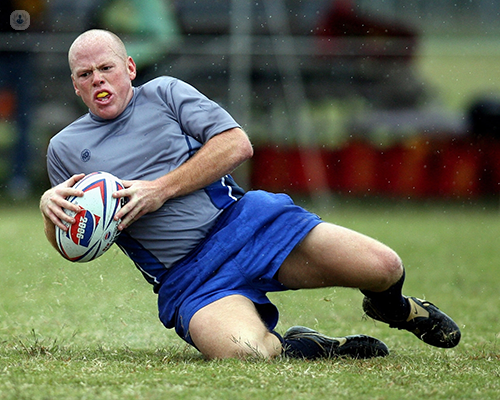Torn meniscus: to remove or repair?
Written by:The meniscus may be a small and easily forgettable part of our anatomy, but it plays an important role every step of the way in our lives. Located between the femur and tibia, it acts as a cushion and shock absorber, and provides a certain level of stability as it bears most of our weight whenever we are on foot. Meniscal tears usually occur following a twisting injury, with the meniscus getting caught between the femur and tibia, causing great pain and discomfort. The severity of a meniscal tear depends on how the patient injured themselves, and how old they are. The older a person gets, the more frail the meniscus and the more easily it tears.

How common are meniscal tear injuries and how can they happen?
Meniscal tears are the most common form of knee injury. Those most at risk are people who play running sports such as football, rugby, squash, skiing and even tennis. Any type of activity that involves contact or changing direction may cause the leg to twist thus tearing the meniscus. As the meniscus wears down over time, it is also possible for an elderly person to tear it whilst walking.
There is nothing that can be done to pre-emptively prevent a meniscal tear occurring, it is simply a case of luck of the draw. Somebody could play rugby for their entire lives and never tear their meniscus, but one day as they get up from a kneeling or squatting position their meniscus could tear in an instant. However, that said, if you play sport, you will always be more at risk of suffering a meniscal tear than those who don't.
What are the symptoms of a meniscal tear?
Symptoms may develop gradually over the course of a few days or occur instantaneously. One of the most common symptoms of a meniscal tear is acute pain. People have often described it as feeling like they have been stabbed in the knee with a knife or a needle. The knee then tends to swell up for several hours after injury. Although most people may be able to walk on their injured leg, albeit feeling unstable, in some cases they may find themselves unable to bear weight. For more serious meniscal tears, the knee locks up making it impossible to straighten the leg.
How do you treat a meniscal tear?
In order to make a diagnosis, an MRI scan is carried out in order to confirm whether it is a meniscal tear or not, and to what extent the meniscus is damaged.
Treatment depends on the severity of the tear. A lot of patients will have to go on crutches if they are unable to bear weight properly.
Mild meniscal tears can be treated with anti-inflammatory medicine and physiotherapy to begin with. If symptoms worsen and interfere with everyday life, then a specialist will most likely recommend an arthroscopy, maybe cutting out part of the meniscus. With more severe tears, arthroscopy may be advised from the outset.
As arthroscopy is a minimally invasive form of keyhole surgery, there is no need to open up the knee in order to carry out meniscus surgery. The surgeon is able to perform the entire operation whilst the patient is under an anaesthetic, using an arthroscope in order to remove or repair the meniscus accordingly, resulting in minimal scarring.
Although menisci can rarely be repaired completely, as the blood supply to the meniscus is very poor making it impossible to heal, in younger patients it is still the more favourable option, using sutures to hold the torn meniscus together.
In patients over the age of 40, only around 5% of meniscal tears are repairable. As older people don’t usually get peripheral tears, they need to have their meniscus removed entirely.
What can be expected post-operation?
After meniscus removal the patient can expect to be walking normally after 10 to 12 days and returning to sport after 4 to 6 weeks. Years after the operation, arthritis is a possible side-effect of meniscus removal, as you are effectively removing the cushion from between the bones.
However, if the patient had their meniscus repaired, recovery can take a lot longer. For the first 6 weeks, they will only be allowed to partially bear weight, using crutches and wearing a leg brace to ensure the knee does not bend thus jeopardising the success of the operation. It may take up to 2 or 3 months more before they can put weight on their knee. Any sooner, and they risk damaging their meniscus again and having to go through the whole process a second time.
Physiotherapy is key when it comes to meniscus recovery. Starting with partial weight bearing, patients gradually work up to more vigorous physiotherapy as the strength returns to their leg muscles. Swimming is a great option for speeding up the process and strengthening muscles, as it is non-weight-bearing and non-impact. Cycling is also encouraged once full movement is possible. After meniscus repair, it can take as long as 6 months before the patient is able to return to playing sport. Around 75% of meniscus repair operations are successful.
What does the future hold for meniscus surgery?
Experimental meniscal transplants have been carried out, but the early results are not good. In the future, depending on how things develop, stem cells may be used to create menisci for meniscus surgery. Although stem cell research is still extremely experimental, it may be an option in the future if it proves successful.


